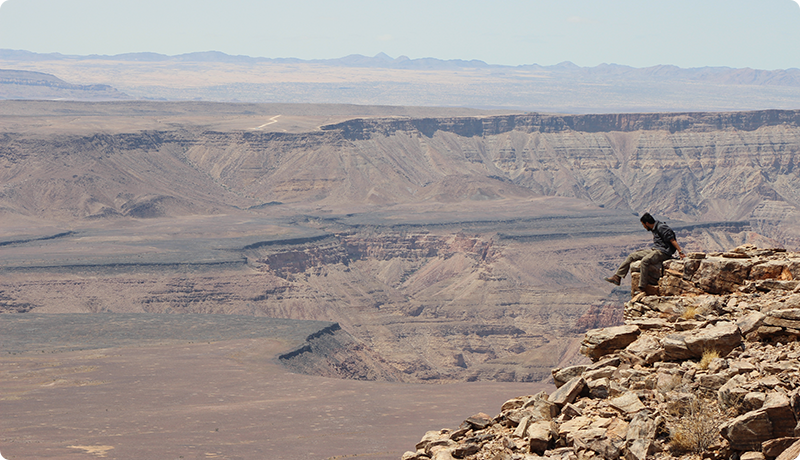

In the rugged landscapes of Namibia, a geological masterpiece awaits those who venture into its embrace — the Fish River Canyon. Carved over millennia by the eponymous river, this awe-inspiring canyon stands as a testament to the forces of nature, offering a canvas where time and erosion have sculpted a majestic tapestry of cliffs, ravines, and winding riverbeds.
Spanning approximately 160 kilometers in length and reaching depths of up to 550 meters, Fish River Canyon is heralded as one of the largest canyons in the world. Its formation began around 650 million years ago when tectonic activity and the shifting of the Earth's crust set the stage for the erosive forces that would follow. The Fish River, over time, carved its sinuous path through the ancient rocks of the Namibian plateau, fashioning the dramatic landscape we witness today.
What makes Fish River Canyon truly captivating is its exposed geological layers, revealing the intricate history of the Earth. The canyon exposes a cross-section of rock formations dating back to different epochs, showcasing the enduring journey of the landscape through the ages. As the sunlight plays upon the canyon walls, each layer tells a story of sedimentation, uplift, and the relentless passage of time.
For those seeking an immersive experience amidst the grandeur, the Fish River Canyon offers a challenging yet rewarding hiking trail. The Fish River Canyon Hiking Trail, stretching over 80 kilometers, leads intrepid hikers through the heart of the canyon, presenting ever-changing vistas and a profound connection with the natural world.
The trail, typically completed over 5 to 7 days, takes hikers along the meandering course of the river, through sandy terrain, and past towering cliffs. Along the way, the hiker is treated to panoramas that shift from the gentle curves of the river to the dramatic depths of the canyon, creating a journey that is both physically demanding and spiritually enriching.
Contrary to its harsh appearance, Fish River Canyon is home to a surprising array of life. Hardy plants, adapted to the arid conditions, cling to the canyon walls, adding a touch of greenery to the rugged landscape. The canyon also serves as a sanctuary for wildlife, with animals such as klipspringers, baboons, and various reptiles navigating the challenging terrain.
The river itself is home to fish species such as yellowfish, contributing to the delicate balance of the canyon's ecosystem. The presence of life, however sparse, adds to the allure of Fish River Canyon, demonstrating nature's resilience in even the harshest environments.
While Fish River Canyon steals the spotlight, the nearby town of Aus offers a contrasting experience. Known for its wild horses, abandoned diamond mines, and a sense of tranquil isolation, Aus provides a fascinating detour for those exploring the region.
Recognizing the ecological and geological significance of Fish River Canyon, Namibia is committed to conservation efforts to protect this natural wonder. Conservation initiatives aim to balance tourism with the preservation of the canyon's delicate ecosystem, ensuring that future generations can marvel at its splendor.
Fish River Canyon stands as a testament to the enduring dance between water and stone, a symphony written by the forces of nature. Whether traced along the canyon's rim or etched into its sandy trails, every step reveals a chapter in the geological epic that has unfolded over millions of years. As the sunlight paints the canyon walls in hues of gold during sunset, or as the river winds its way through the ancient rocks, Fish River Canyon remains an invitation to connect with the Earth's history and marvel at the ever-changing beauty of Namibia's landscapes.
All rights reserved by Africa Tourism information. Another website by Maestro Media